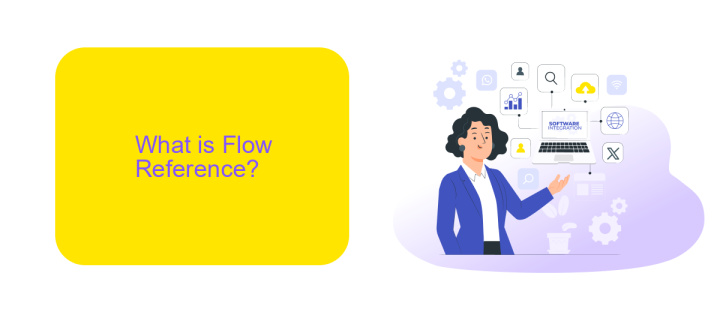What is Flow Reference in MuleSoft
Flow Reference in MuleSoft is a powerful component that enhances modularity and reusability within your Mule applications. By allowing developers to call and reuse flows across different parts of the application, it simplifies complex integrations and promotes efficient development practices. This article delves into the concept of Flow Reference, its benefits, and how to effectively implement it in your MuleSoft projects.
Introduction
Flow Reference in MuleSoft is a powerful feature that enables developers to create modular and reusable integration flows. By referencing existing flows, you can streamline your development process and maintain cleaner, more organized projects. This approach not only enhances code reusability but also simplifies maintenance and troubleshooting.
- Improved modularity and reusability of flows
- Streamlined development and maintenance
- Enhanced project organization and clarity
Leveraging Flow Reference, developers can efficiently manage complex integration scenarios, ensuring seamless communication between various systems. For instance, using a service like ApiX-Drive can further simplify the integration setup by providing a user-friendly platform to connect disparate applications. This combination of MuleSoft's Flow Reference and ApiX-Drive's capabilities can significantly accelerate the integration process, making it more efficient and reliable.
What is Flow Reference?

Flow Reference in MuleSoft is a powerful feature that allows developers to reuse existing flows within a Mule application. By referencing a flow, you can streamline the integration process, reduce redundancy, and enhance maintainability. This feature is particularly useful when you have common processing logic that needs to be executed across multiple flows. Instead of duplicating the logic, you can create a reusable flow and reference it wherever needed.
One practical application of Flow Reference is in setting up integrations with services like ApiX-Drive. ApiX-Drive is a platform that simplifies the process of connecting various applications and automating workflows. By leveraging Flow Reference, you can create a modular and efficient integration setup with ApiX-Drive, ensuring that any changes to the common logic are automatically propagated across all the referencing flows. This not only saves development time but also minimizes the risk of errors, making your MuleSoft integrations more robust and scalable.
Features of Flow Reference

Flow Reference in MuleSoft is a powerful tool that allows developers to modularize their integration flows, enhancing reusability and maintainability. By referencing existing flows, developers can streamline their integration processes and ensure consistency across various projects.
- Reusability: Flow Reference enables the reuse of existing flows, reducing redundancy and saving development time.
- Maintainability: By modularizing flows, updates and changes can be managed more efficiently, ensuring that modifications in one place reflect across all references.
- Consistency: It helps maintain consistent logic and processes across multiple integrations, ensuring uniformity in data handling and processing.
- Scalability: As projects grow, Flow Reference allows for scalable integration solutions, accommodating increasing complexity without compromising performance.
- Integration with ApiX-Drive: Flow Reference can be effectively used in conjunction with ApiX-Drive to automate and streamline data transfer between various applications and services, enhancing overall integration capabilities.
Incorporating Flow Reference in your MuleSoft projects not only optimizes development efforts but also ensures a robust and scalable integration architecture. By leveraging tools like ApiX-Drive, you can further enhance your integration workflows, making data synchronization between different systems seamless and efficient.
Benefits of Using Flow Reference

Using Flow Reference in MuleSoft offers a streamlined approach to managing complex integrations. By referencing reusable flows, developers can enhance the modularity and maintainability of their Mule applications. This leads to a more organized and efficient integration process, reducing redundancy and potential errors.
One of the primary benefits of Flow Reference is the ability to simplify the orchestration of various services and APIs. For instance, integrating with services like ApiX-Drive becomes more manageable, as developers can encapsulate the integration logic within a reusable flow, ensuring consistency and ease of updates.
- Enhanced modularity and reusability of integration flows
- Improved maintainability and readability of Mule applications
- Reduced redundancy and potential for errors
- Streamlined orchestration of various services and APIs, including ApiX-Drive
In conclusion, leveraging Flow Reference in MuleSoft not only promotes best practices in integration design but also optimizes the development workflow. By encapsulating integration logic into reusable components, teams can achieve greater efficiency and reliability in their Mule applications. This approach is particularly beneficial when working with comprehensive integration services like ApiX-Drive.
Use Cases of Flow Reference
Flow Reference in MuleSoft is a powerful tool that allows developers to streamline and modularize their integration processes. One common use case is the reuse of complex logic across multiple flows. For instance, if an organization has a standardized way of handling customer data, this logic can be encapsulated in a single flow and referenced wherever needed. This not only reduces redundancy but also ensures consistency across various integration points. By using Flow Reference, developers can maintain a single source of truth, making updates and debugging much more manageable.
Another practical use case is the integration of third-party services like ApiX-Drive. ApiX-Drive enables seamless integration between different SaaS applications, and by leveraging Flow Reference, MuleSoft developers can easily incorporate ApiX-Drive's functionalities into their workflows. For example, a flow that handles CRM data can reference a sub-flow dedicated to synchronizing data with ApiX-Drive, thereby simplifying the overall architecture. This modular approach enhances scalability and makes it easier to adapt to changing business requirements without overhauling the entire integration setup.
- Automate the work of an online store or landing
- Empower through integration
- Don't spend money on programmers and integrators
- Save time by automating routine tasks
FAQ
What is a Flow Reference in MuleSoft?
How do you use a Flow Reference in a Mule application?
What are the benefits of using Flow References in MuleSoft?
Can you pass parameters between flows using Flow References?
Are there any limitations to using Flow References in MuleSoft?
Apix-Drive is a simple and efficient system connector that will help you automate routine tasks and optimize business processes. You can save time and money, direct these resources to more important purposes. Test ApiX-Drive and make sure that this tool will relieve your employees and after 5 minutes of settings your business will start working faster.


